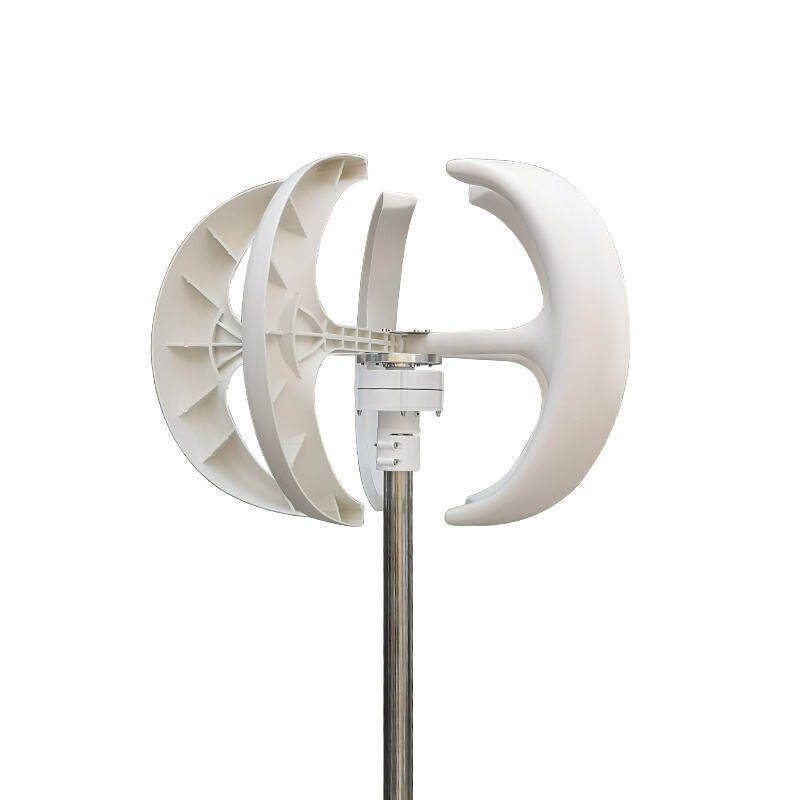Email format error
Email cannot be empty
Email already exists
6-20 characters(letters plus numbers only)
The password is inconsistent
Email format error
Email cannot be empty
Email does not exist
6-20 characters(letters plus numbers only)
The password is inconsistent


Harnessing the Power of Wind: The Role of Permanent Magnet Generators in Wind Turbines
As the world increasingly turns to renewable energy sources, wind power has emerged as a pivotal player in the global energy landscape. Central to the efficiency and effectiveness of wind turbines is the permanent magnet generator (PMG). In this blog, we will explore the fascinating world of permanent magnet generators for wind turbines, highlighting their importance, functionality, and advantages, all while keeping the content engaging and straightforward.
The Basics of Wind Energy
Wind energy harnesses the natural power of the wind to generate electricity. Wind turbines, the primary devices used in this process, convert kinetic energy from the wind into mechanical energy, which is then transformed into electrical energy. At the heart of this transformation lies the generator, with the permanent magnet generator for wind turbines being one of the most efficient and reliable options available today.
What is a Permanent Magnet Generator?
A permanent magnet generator (PMG) is a type of generator that uses permanent magnets to produce a magnetic field. Unlike traditional generators that rely on electromagnets, PMGs have a set of permanent magnets that maintain a consistent magnetic field without the need for an external power source. This unique characteristic makes PMGs highly efficient and suitable for various applications, including wind turbines.
How Do Permanent Magnet Generators Work in Wind Turbines?
In a wind turbine, the blades capture wind energy and transfer it to a rotor. This rotor is connected to the permanent magnet generator. As the rotor spins, the PMG converts the mechanical energy into electrical energy. The key components of this process include:
1. Rotor Blades: Capture wind energy and cause the rotor to spin.
2. Rotor: Transfers kinetic energy from the blades to the generator.
3. Permanent Magnets: Create a constant magnetic field, eliminating the need for external power sources.
4. Stator: Contains coils of wire through which the magnetic field induces an electric current, generating electricity.
Advantages of Permanent Magnet Generators for Wind Turbines
Permanent magnet generators offer several significant advantages over traditional generators, making them the preferred choice for modern wind turbines:
1. Higher Efficiency: PMGs are known for their high efficiency, as they eliminate the energy losses associated with the excitation process in traditional generators.
2. Lower Maintenance: With fewer moving parts and no need for an external power source for the magnets, PMGs require less maintenance, reducing operational costs.
3. Compact and Lightweight: PMGs are generally more compact and lighter than traditional generators, making them easier to integrate into wind turbine designs.
4. Reliability: The use of permanent magnets ensures a stable and consistent magnetic field, enhancing the reliability and longevity of the generator.
5. Scalability: PMGs can be scaled to fit various sizes of wind turbines, from small residential units to large commercial installations.
The Future of Wind Energy with Permanent Magnet Generators
The adoption of permanent magnet generators in wind turbines represents a significant step forward in the quest for efficient and sustainable energy solutions. As technology continues to advance, PMGs are expected to become even more efficient and cost-effective, further solidifying their role in the renewable energy sector.
Real-World Applications and Case Studies
Many wind farms around the world have already embraced permanent magnet generators for their wind turbines. For instance, the offshore wind farms in the North Sea utilize PMGs to harness the strong and consistent winds, providing clean energy to millions of homes. These installations demonstrate the practical benefits of PMGs, including their durability and high energy output.
Challenges and Innovations in Permanent Magnet Generators
Despite their many advantages, the development and implementation of permanent magnet generators (PMGs) in wind turbines are not without challenges. One significant challenge is the sourcing and cost of the rare earth materials used in permanent magnets, such as neodymium and dysprosium. These materials are essential for creating the strong magnetic fields required for high-efficiency PMGs but are often expensive and subject to supply chain volatility.
Innovations in Material Science
To address these challenges, researchers and engineers are exploring alternative materials and innovative manufacturing processes. For example, advancements in material science are leading to the development of high-performance magnets that require less rare earth content or utilize entirely different materials. These innovations not only reduce costs but also make PMGs more sustainable and less dependent on limited resources.
Enhanced Design and Manufacturing Techniques
Modern manufacturing techniques, such as 3D printing and precision engineering, are also playing a crucial role in the evolution of PMGs. These techniques allow for more complex and efficient designs that maximize the performance of the magnets and the overall generator. Enhanced cooling systems, improved aerodynamics, and better integration with turbine control systems are some of the areas where design innovations are making a significant impact.
Grid Integration and Smart Technology
As wind energy continues to grow, integrating wind turbines with the electrical grid efficiently is becoming increasingly important. Permanent magnet generators, with their stable and reliable output, are well-suited for integration with smart grid technologies. These smart grids can dynamically adjust the flow of electricity based on demand and supply, optimizing the use of renewable energy sources like wind power.
Environmental Impact and Sustainability
Another critical aspect of using permanent magnet generators in wind turbines is their environmental impact. PMGs contribute to the reduction of greenhouse gas emissions by enabling more efficient wind energy generation. Additionally, advancements in recycling and end-of-life management for permanent magnets are helping to mitigate the environmental impact of their production and disposal.
Case Studies and Success Stories
Several wind energy projects worldwide showcase the successful implementation of permanent magnet generators. For instance, the Horns Rev 3 offshore wind farm in Denmark, one of the largest in the world, utilizes PMGs in its turbines. This wind farm generates enough electricity to power approximately 425,000 Danish households, highlighting the significant impact of PMGs on renewable energy production.
The Role of Policy and Regulation
Government policies and regulations also play a vital role in the adoption of permanent magnet generators for wind turbines. Incentives for renewable energy projects, research funding, and support for sustainable material sourcing are essential for driving innovation and widespread adoption. Countries with strong renewable energy policies are often at the forefront of implementing advanced technologies like PMGs.
Educating the Next Generation
As the renewable energy sector grows, so does the need for skilled professionals who understand the intricacies of technologies like permanent magnet generators. Educational institutions and training programs are increasingly focusing on renewable energy engineering, providing the next generation with the knowledge and skills needed to continue advancing this field.
Looking Ahead: The Future of Wind Energy
The future of wind energy, powered by innovations in permanent magnet generators, looks promising. As technology continues to evolve, we can expect even more efficient, reliable, and cost-effective solutions that make wind power an increasingly dominant force in the global energy market.
Conclusion
In conclusion, the permanent magnet generator for wind turbines represents a cornerstone of modern wind energy technology. Its benefits in efficiency, reliability, and maintenance make it a vital component in the quest for sustainable energy solutions. As we move towards a future powered by renewable energy, the ongoing advancements in PMGs will play a crucial role in achieving our environmental and energy goals.
The permanent magnet generator for wind turbines is more than just a piece of technology; it symbolizes the innovative spirit driving the renewable energy revolution. By continuing to invest in and develop this technology, we can harness the full potential of wind energy and create a cleaner, more sustainable future for generations to come.
Incorporating permanent magnet generators into wind turbine designs not only enhances performance but also contributes to the broader goal of reducing our carbon footprint. With ongoing innovations and advancements in this field, the future of wind energy looks brighter than ever.
So, the next time you see a wind turbine spinning gracefully in the breeze, remember the powerful role of the permanent magnet generator at its core, quietly and efficiently converting wind into the clean electricity that powers our world.

